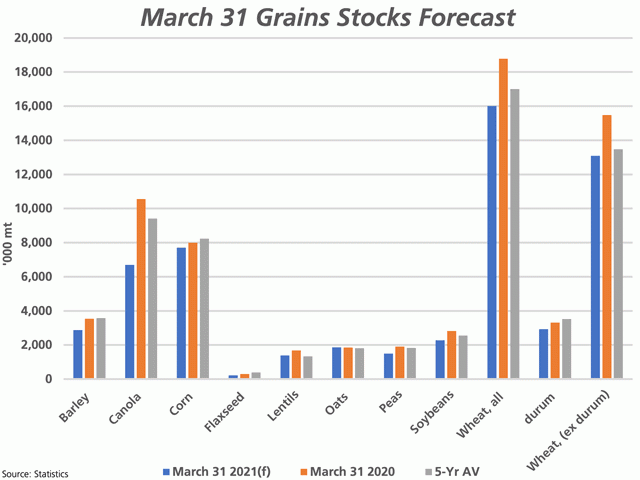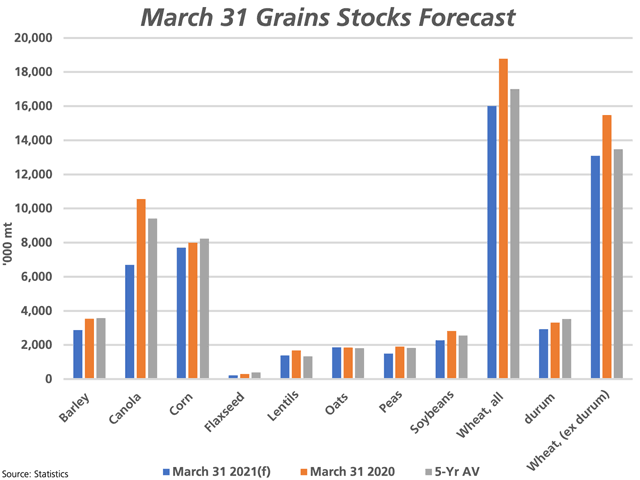Canada Markets
Statistics Canada March 31 Stocks, What Can We Expect?
In advance of Statistics Canada March 31 stocks estimates release on May 7, it is easy to expect that a year-over-year drop will be reported for almost all grains, while stocks for some grains will be reported at critical levels. When Statistics Canada released its Dec.31 grain stocks estimates, durum stocks showed a 2.2% increase from December 31 2019, corn was reported 3.3% higher and oat stocks were reported 0.4% higher. All other crops saw stocks reported from 2.6% to 23.7% lower than reported for Dec. 31, 2019.
Solid demand has been experienced since, both on the export side along with domestic demand, that should lead to an even sharper year-over-year drop as of March 31, while for some crops it will lead to concerns for the rest of the crop year. At the same time, the possibility always exists that Canada's statisticians surprise us by finding grain.
P[L1] D[0x0] M[300x250] OOP[F] ADUNIT[] T[]
The forecast shown on the attached chart is calculated using Statistics Canada's official Dec. 31 stocks, with official data for exports, imports, crush, and milling deducted. Estimates were made for feed demand based on AAFC's current supply and demand tables.
Of the crops selected, oat stocks were the only stocks that resulted in a year-over-year increase as of March 31, with a 0.8% increase from one year to the next.
This calculation results in stocks of canola, flax and peas at levels that will prove troublesome for the balance of the crop year. For example, canola stocks are estimated at 6.698 million metric tons, which would be down 36.5% from last year and 28.9% from the five-year average. This would be the lowest March stocks seen since the 2012-13 crop year. In 2019-20, disappearance from April 1 through the balance of the crop year totaled 7.423 mmt, while totaling 6.687 mmt on average during the past five years. Such a report will signal a tough go ahead for both exporters and crushers, while tight beginning stocks for 2021-22 would leave little room for problems over the upcoming growing season.
Statistics Canada will release this report at 7:30 CDT on May 7.
Cliff Jamieson can be reached at cliff.jamieson@dtn.com
Follow him on Twitter @Cliff Jamieson
(c) Copyright 2021 DTN, LLC. All rights reserved.





Comments
To comment, please Log In or Join our Community .